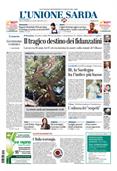But who were our ancestors?
In a book, the ancestral origins of Italians... and SardiniansPer restare aggiornato entra nel nostro canale Whatsapp
We Italians think, like other modern peoples, that we belong to a well-defined territory, a cohesive culture, a linear history made up of ancestors who lived on our peninsula for millennia, behaving more or less as we continue to do today. But is this really the case?
Giacomo Moro Mauretto, a doctor in evolutionary biology and a science communicator online under the pen name Entropy for Life, holds a rather nuanced perspective on the issue, as evidenced in his essay "True Italians" (Mondadori, 2025, €18.00, 24 pages. Also available as an ebook). Even if we think of ourselves as descendants of the first Sapiens who set foot in Italy over 40,000 years ago, or believe we possess some traces in our DNA of the Neanderthals who inhabited our lands even before, in reality, every element we consider part of our identity—the land we live in, the people we descend from, the traditions that define us—has a far more complex and intertwined history than we imagine. Technological innovations of the last twenty years and in-depth studies of our DNA and that of our ancestors, for example, have allowed us to discover that the majority of our ancestors were not even in Italy until 5,000 years ago, or that the plants and animals around us traveled across continents before settling here.
We Italians are, in fact, the result of multiple genetic overlaps. Our gene pool is thus composed of three differently mixed macrogroups. The first comes from Mesolithic hunter-gatherers (who spread across Europe between 10,000 and 8,000 BC), the second from Neolithic farmers from the Anatolian Peninsula (8,000-3,500 BC), and the third from herders who arrived in Europe from the Asian steppes during the Bronze Age (4th-2nd millennium BC). Be careful, however: this overlap partially excludes the inhabitants of Sardinia, whose gene pool, as Mauretto recounts in highly entertaining and informative pages, clearly bears the marks of Anatolian farmers, while the herders from the steppes who arrived in Italy during the Bronze Age are completely absent. How this could have happened—despite the great cultural and economic exchange of which Sardinia has always been at the center—remains a mystery. At least until the next genetic discovery…
But returning to the Bel Paese as a whole, genetic studies have shown that another change occurred with the Roman conquest of the Mediterranean. Analysis of artifacts dating from the Roman imperial era has shown that the genetic profile of the peninsula's inhabitants changed significantly, by as much as 50%, with a contribution of genes from the Middle Eastern regions of the Mediterranean. Rome had become an empire, and there was likely an influx of people into the Italian peninsula from other Roman-dominated areas, particularly the eastern Mediterranean. Analyses have also shown that during the imperial period, genetic change primarily affected the Y chromosome, the one of paternal origin, a sign that the Middle Eastern element came primarily from males. Therefore, it was primarily soldiers, merchants, and slaves who moved to the Italian peninsula in what was the penultimate major genetic reshuffling before the barbarian invasions. The arrival of the barbarians was the last major change evidenced by the artifacts. The so-called barbarian invasions added elements of the Germanic peoples, particularly the Lombards, to the gene pool of those living in northern and central Italy. After that, the genetic heritage remained stable. Further reshuffles await, as genetics moves in waves lasting millennia and even longer.
Remaining in the past, Giacomo Moro Mauretto, with his clear, accurate, and flowing style, reconstructs the evolutionary and genetic history of our country and takes us on a journey through time spanning millions of years. Through genetics, archaeology, paleoanthropology, biology, and botany, he reconstructs the true identity of the human race who lived within the borders we have known as Italy for only a few centuries. Ultimately, there is no such thing as "Italian blood," nor has there ever been an Italian genetic lineage distinguishable from other groups. Much of what allows us to identify ourselves (genetics, territory, and culture) as Italians often has much more recent roots than we think. In short, no one can consider themselves a true Italian, but understanding where we come from and who, perhaps, we will become is the only way to understand who we truly are.
